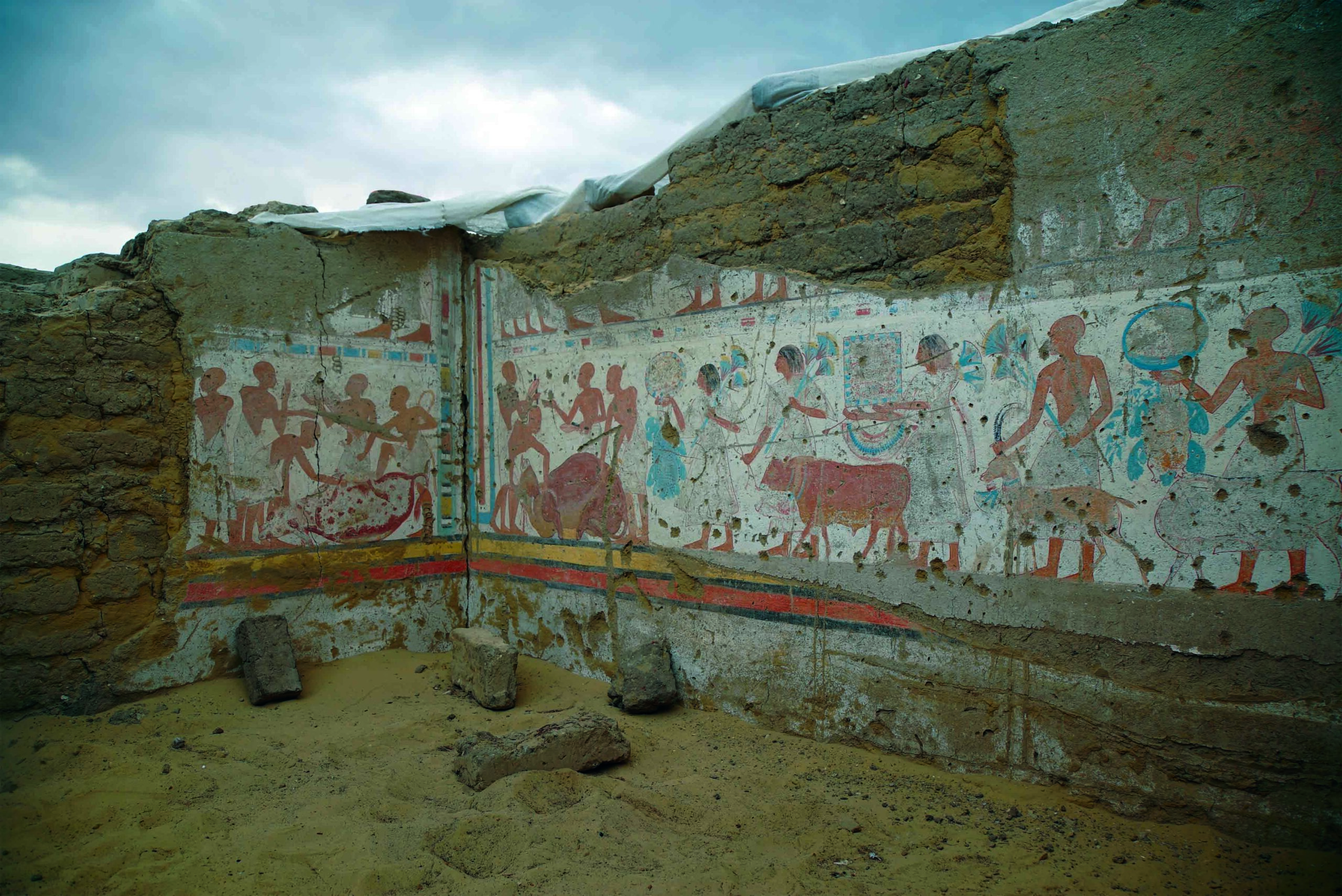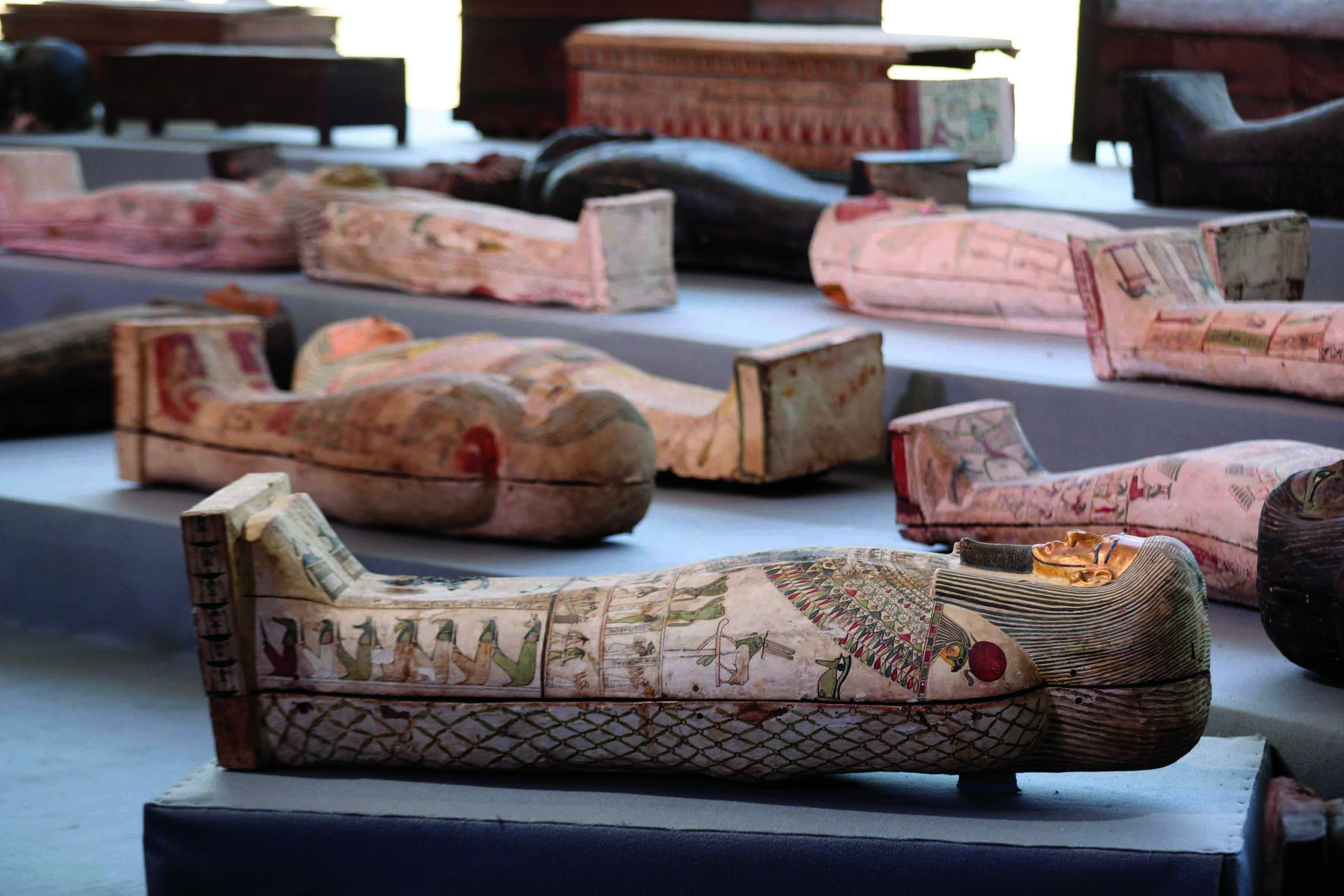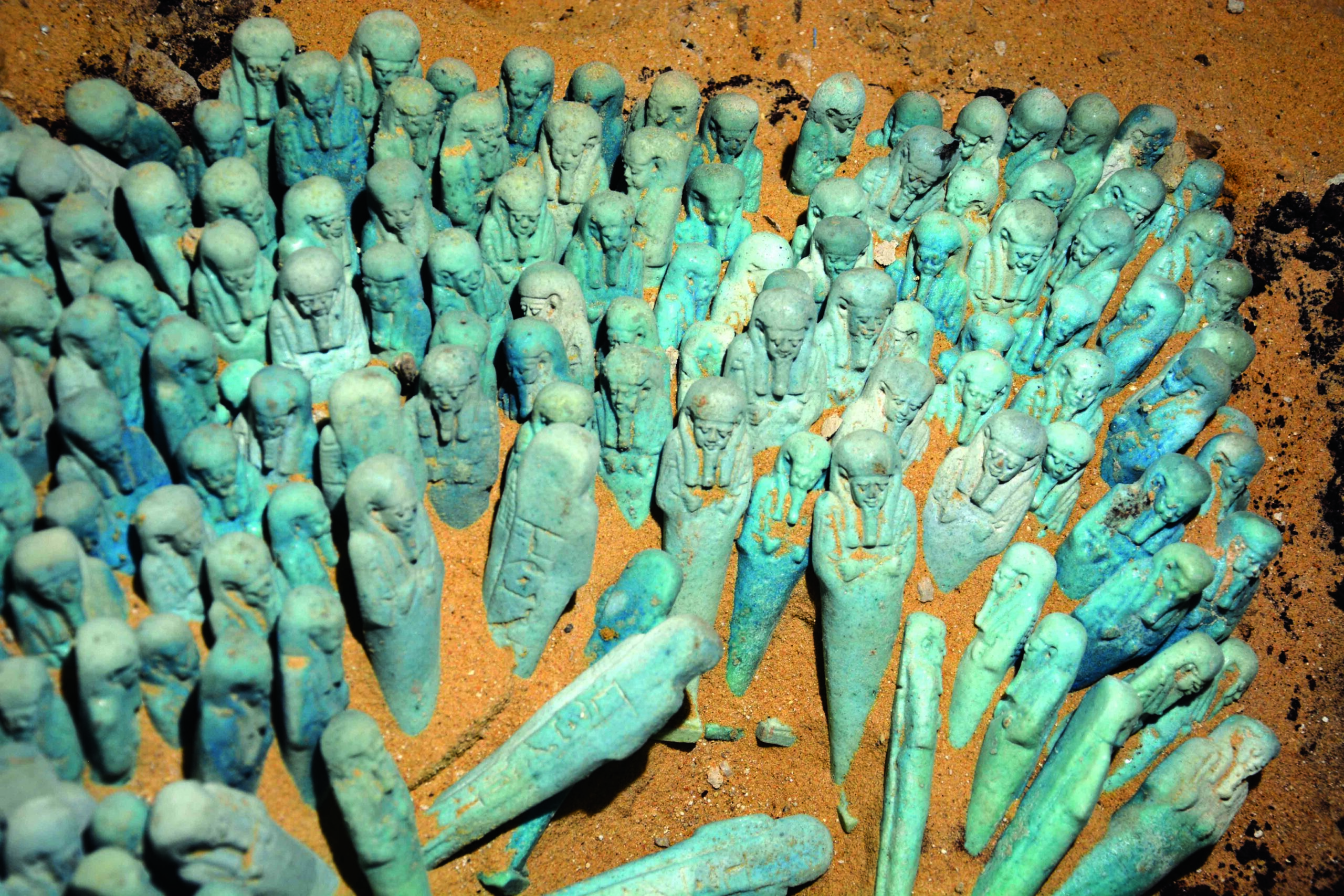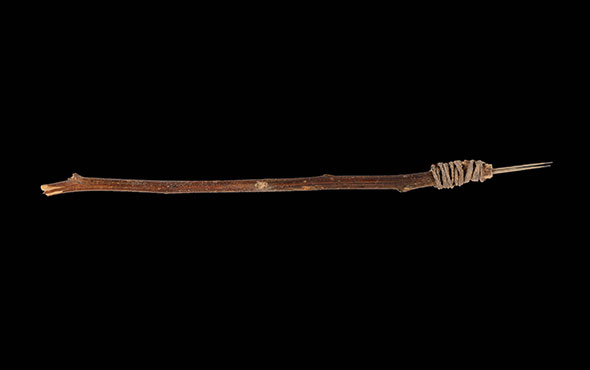
WARSAW, POLAND—Science in Poland reports that the so-called Dry Moat, a ditch surrounding Saqqara’s Pyramid of Djoser, might have served as a 3-D model of what was believed to be a pharaoh’s difficult path to the afterlife through a series of obstacles guarded by dangerous creatures. Djoser, the first pharaoh to be buried in a pyramid, ruled Egypt from about 2630 to 2611 B.C. Researchers led by Kamil O. Kuraszkiewicz of the University of Warsaw have uncovered unusual tunnels containing transverse walls, stairs, and rows of deep niches that lead to the Pyramid of Djoser, and may date to the same period. They also found a ritual harpoon decorated with carved images of snakes in a small room connected to one of the tunnels. “This weapon could be either one of the threats awaiting the king, or a weapon prepared for the ruler to be used against them,” Kuraszkiewicz explained. A rectangular hole blocked by a huge rocks may lead to additional tunnels. For more on Egypt's pyramids, go to “The Great Parallelogram.”











